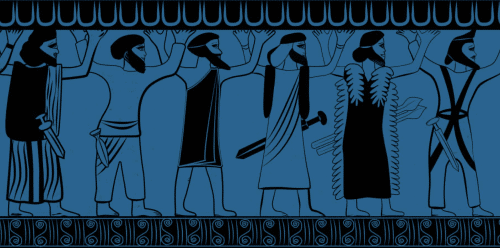Publication
Fairness and equity, universal rights and freedoms, representative, balanced, democratic governance, the notion that no one is above the law— these are ideas many of us cherish in the modern world. But where did they come from? According to some scholars, these features of modernity have their roots in the period between 800 and 200 BCE. In this “Axial Age,” they state, crucial intellectual, moral, and political changes took place more or less simultaneously in five core regions across Eurasia, reaching from present-day Greece, Israel-Palestine, Iran and India to China.
Seshat History of the Axial Age challenges the view that there was a single Axial Age in human history. Applying insights from a massive historical research project, Seshat: Global History Databank, the volume reveals that societies all over the world gravitated more strongly towards egalitarian ideals and constraints on political authority—traits usually associated with axiality—as they reached a tipping point in the evolution of social complexity.
In fourteen chapters, the authors survey earlier and later periods in history as well as developments in regions previously neglected in Axial Age discussions, thus expanding the Axial Age debate well beyond first-millennium BCE Eurasia. They explore whether there really was an Axial Age, where and when key changes that characterize modern life actually developed, and what drove societies to become more equitable and law-bound.
D. Hoyer, J. Reddish (eds.), Seshat History of the Axial Age, Beresta Books (2019)
Related

Signup
| Cookie | Duration | Description |
|---|---|---|
| cookielawinfo-checkbox-analytics | 1 year | Set by the GDPR Cookie Consent plugin, this cookie records the user consent for the cookies in the "Analytics" category. |
| cookielawinfo-checkbox-functional | 1 year | The GDPR Cookie Consent plugin sets the cookie to record the user consent for the cookies in the category "Functional". |
| cookielawinfo-checkbox-necessary | 1 year | Set by the GDPR Cookie Consent plugin, this cookie records the user consent for the cookies in the "Necessary" category. |
| CookieLawInfoConsent | 1 year | CookieYes sets this cookie to record the default button state of the corresponding category and the status of CCPA. It works only in coordination with the primary cookie. |
| PHPSESSID | session | This cookie is native to PHP applications. The cookie stores and identifies a user's unique session ID to manage user sessions on the website. The cookie is a session cookie and will be deleted when all the browser windows are closed. |
| viewed_cookie_policy | 1 year | The GDPR Cookie Consent plugin sets the cookie to store whether or not the user has consented to use cookies. It does not store any personal data. |
| Cookie | Duration | Description |
|---|---|---|
| mec_cart | 1 month | Provides functionality for our ticket shop |
| VISITOR_INFO1_LIVE | 6 months | YouTube sets this cookie to measure bandwidth, determining whether the user gets the new or old player interface. |
| VISITOR_PRIVACY_METADATA | 6 months | YouTube sets this cookie to store the user's cookie consent state for the current domain. |
| YSC | session | Youtube sets this cookie to track the views of embedded videos on Youtube pages. |
| yt-remote-connected-devices | never | YouTube sets this cookie to store the user's video preferences using embedded YouTube videos. |
| yt-remote-device-id | never | YouTube sets this cookie to store the user's video preferences using embedded YouTube videos. |
| yt.innertube::nextId | never | YouTube sets this cookie to register a unique ID to store data on what videos from YouTube the user has seen. |
| yt.innertube::requests | never | YouTube sets this cookie to register a unique ID to store data on what videos from YouTube the user has seen. |
| Cookie | Duration | Description |
|---|---|---|
| _ga | 1 year | Google Analytics sets this cookie to calculate visitor, session and campaign data and track site usage for the site's analytics report. The cookie stores information anonymously and assigns a randomly generated number to recognise unique visitors. |
| _ga_* | 1 year | Google Analytics sets this cookie to store and count page views. |
| _gat_gtag_UA_* | 1 min | Google Analytics sets this cookie to store a unique user ID. |
| _gid | 1 day | Google Analytics sets this cookie to store information on how visitors use a website while also creating an analytics report of the website's performance. Some of the collected data includes the number of visitors, their source, and the pages they visit anonymously. |